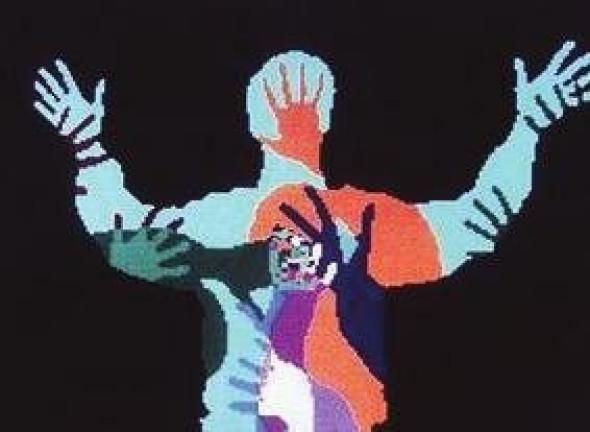'The Simple Expression of Complex Thought': For a Media Theory of Expression
In light of the postmodernist cul-de-sac of relativism which, for all its social constructivism, cannot escape crude causality, M. Beatrice Fazi proposes a metaphysics of difference for decoding expression in interactive media
While walking through a recent Rothko exhibition at the Tate Modern, the audio guide I was provided with tells the story of how Mark Rothko disliked the label ‘abstract expressionist' assigned to him by the critics because he didn't consider his paintings to be unreal compositions (abstract), nor private accounts of his internal emotional life (expressionist). His big, feathered, flooding patches of colour are, in fact, a subtle dynamic of existing processes and materials. No intimate details of the artist's subjectivity are to be found, but layer after layer of imperceptible paint as ‘the simple expression of complex thought.'1
This anecdote per se is rather fascinating, for it concisely and interestingly pinpoints two common misconceptions concerning both abstraction and expressivity. Generally speaking, that which is ‘abstract' is understood as the non-figurative, the symbolic, the transcendent. Fiercely independent from concrete references to the world, abstraction is, for this reason, denied external reality and confined to an imaginary of internal recursive significations. ‘Expression', on the other hand, is the exposed, the spoken, the gestural or, in other words, the communicated qualities of inner experience in all its emphasis and distortion through vivid emotional utterance.
From art history to cultural theory via daily practices of common sense, such denotations seem to stand firm through a large part of contemporary social phenomena, which inevitably involve and develop into discourses on technologisation and digitality. With their capacity for mediation and re-mediation, these latter form the ultimate outposts of communicational practices of mass expressivity on the one hand, or, abstract corporeal decay and immaterial representation on the other.
Translated into practices of ‘interaction' (a word so burdened and inflated to have become, as Massumi splendidly comments, a proper regime of tyranny2 ), the ‘user' is, from this perspective, a sort of strange creature in between a behaviourist Golem, pushing buttons and waiting for feedback, and a transcendental ego of Kantian reminiscence, positing itself and its relation to technology as a world-creating operation of knowledge. Whether adding a layer in Photoshop or jacking into that fictional dimension formerly known as cyberspace, expressivity and its cognates do not seem to go much further than the limits of their own subjectivising instantiations. In other words, expression becomes a designative rapport between the intentionality of a subject and the phenomenality of such a transmission of information. Interactive practices, in this sense, are organised around the more or less conscious or intelligent will of their actors, whether humans or machines.
According to what can arguably be called a ‘communicational' understanding of expression, the user's knowledge and intentions are the basic premises against which to model the semantics of the interactive system.3 Such levels of cognitive representations, then, are called ‘abstractions' for they involve thought ? or, better, rationality ? as a means to formulate a plan of action and consequently evaluate the results. What is affirmed, in this perspective, is the referential function of expression intended as causal transmission of some sort of content from a subject A to an object B. In turn, ‘abstraction' is a tool with which to perform, simplify or support such a communicative task, allowing logical systems to be reasoned out. Whenever, for instance, I decide to upload my holiday pictures on the next best social networking website, my establishing the goal, specifying the intention, executing the action, sequence and finally judging the system's state all become subjective, expressive acts, whose legitimacy and efficacy are guaranteed by a logically antecedent content to be expressed by means of abstract thought processes, where ‘ideas' are distanced from their referent ‘objects'. This is, indeed, also a quite traditional and very common framework in a large part of Human-Computer Interaction.4 Designers of software and hardware aim to create computational products for people who have specific tasks in mind and who want to use machines in a way that is supposedly fluid in respect to their functions, so translating ‘abstract' knowledge into an executable system. If we now look again at the aforementioned example of the ‘upload picture' function of a social networking site, we will see then that it can be said to work exactly in accordance with such HCI principles. Expressivity, thus, is supposedly established by the user's own path through windowing systems, cursor indicators and all the technological features that are meant to present or represent a mirroring or moulding of his/her intentionality.
Admittedly, the parallel drawn here between the homogenised and amateurish constraints of Web 2.0 and the highest spheres of artistic avant gardes of the 20th century could appear bizarre. Yet, the conceptual rationale behind the two is possibly the same: to pursue and interpret expressionism as a twofold movement of interiorisation and exteriorisation, which of course differs from artistic technique to massified technics, but nevertheless presupposes inputs to be translated into stimuli for the system; an interface allowing the interaction to be successful and a hypertrophied centre of subjectivity presiding over the symbolic exchange.
Such a ‘fetish' of relations and responses, perpetuating the myth of interaction involving at least two participants (the user and the system), is premised on a self/other dialectical dichotomy that the best poststructuralist contemporary thought has already helped to expose and dismantle. Very few theorists today would disagree that an alternative to the Cartesian-Kantian subject has offered, in recent years, a fortunate intellectual metaphor with which to bridge disciplines and suggest new models of critical analysis. Also techno and software cultures, in this regard, seem to be better understood through more comprehensive environments and composite networks of connections across the machine and the organic. This position rejects the very notion of a human being as a centre of conscious thought and action, and aims to acknowledge the manifold aspects of technological instantiations and their socio-cultural contexts.
In my view, though, it can be said that a postmodern emphasis on the social-constructivist critique of subjective communication ? with its self-reflective universes of simulations, reproduction and deconstructed meta-ideologies ? has not liberated abstraction from its own image of signification and denotative correspondence, nor the interactive system from its own expectations of usability. Rather, positioning mental images and their relationship to one another in a relativist but yet causal framework results in an anti-metaphysical gesture against the concretion of intelligible structures and formal principles of reality. Such stances ? and here is the main point ? allegedly compose the whole through an industrious, experimental construction but, in fact, reinstate a correspondence of content between simulation and simulated, produced and reproduced, the user and his/her behaviour.
In this regard, then, one could argue that the postmodern reworking of expression still demands an act of synthesis between the parties. Let us think, for the sake of argument, about media theory questions like how we define ourselves in the digitally networked space and how these have often been explored and expanded as new ways of producing the body of deconstructed subjectivities. New media artefacts, in this sense, are seen as actively producing digital embodiment. Similarly, our relationship to subjectivity and its corporality are supposedly made ‘different' through our encounter with digital technology.
To develop this point, let us now take as an example the classical and seminal interactive media art pieces of Myron Krueger and his pioneering mixed-reality environments, and try to interpret them through the aforementioned relativist and postmodern conceptual framework. In Krueger's Videoplace (1972-1990s), virtual reality can be experienced without wearing awkward goggles or gloves.5 The visitor's movements are captured, analysed and outlined in an image of the body as processed by the interaction with the machine and other graphic poles in the system. By adding the body back in the virtual picture and so relating the different to the different, (whether material substratum and computational processing or the condition of action and the conditioned response), the work creates a clever series of responses and linkages by means of composition, articulation and connection.
In this regard, though, it can be said that such a play of absence and presence recalls a sort of notoriously Hegelian ‘labour of the negative' through which interaction sets out to win its freedom. Differences between parts of the interactive system are premised upon a relation of determination in which all the elements - posture, rate of movement, visual and auditory reactions, etc. - must be somehow negated and recomposed by the computer processing in order to attain reality and identity. While it is true that the subject of this system is not intended to be a cognitive unity of perceptions, the expression of action of such a dismantled centre appears to be determined by mechanisms of simulation which invest a lot into the polarity of complete action-response and its final manifestation.
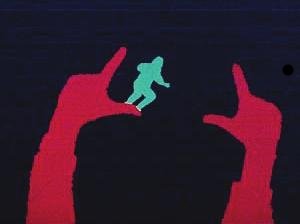
To a large extent, this is also the contradiction emerging between experience and determination in strictly socio-constructivist and relativist models of technological expressionism. Form is dismissed in favour of behaviour with the intention of opposing uncritical and naïve subjectivism and the unity of individual life. From this perspective, practices of interaction seem to evoke patterns and roles of action and conduct them over a predetermined and monolithic mathematical form. Interactive structures ? from artistic compositions to commercial products via industrial applications ? are said to be grounded in a demanding reality, much richer in behaviour than formal and algorithmic systems, developing the idea that knowledge cannot be passively absorbed but must be actively situated and constructed by the system itself.
In a very ‘ubicomp' spirit, today's technological practices appear in fact to bring to the fore the question of how we can interact with conversational situations rather than with single appliances.6 The goal of a ‘calm technology' is thus to engage with the full complexity around and within the system by connecting things in the world via a sort of ‘socio-constructional' computation. In this view, for instance, an iPhone is precisely such an amazing piece of computational gadgetry due to its capacity to relate to the elaborate world of its user. Thanks to software components and hardware sensors able to detect and respond to external reality, an object as mundane as a mobile phone then becomes a world-making experiential medium, which creates a situation relative not only to its social functions but also to the user's personal expectations.
The actualisation of these patterns of interaction are then prevalently preoccupied with overcoming moments of discontinuity, articulating differences in a sort of ‘discursive' composition of parts. The design of the computational object ? be it a commercial device or a piece of art ? begins with an abstraction of what it should do and ends with the behavioural completeness of its contextually constructed or deconstructed conditions. The expression of such a relational system aims to trigger behaviour on both sides of the classical dichotomy object/subject, machine/user. In my view, though, this conceptual outlook has a reductive understanding of both ‘form' and ‘formality' that could be somehow misleading. First, it seems to assume that information can be arbitrarily opposed to its medium in which it is in fact ‘in-formed'. Second, it looks at technology as a carrier of the narrow utilitarian purpose of creating the ‘human' and assesses digital systems as infrastructures for such participative ends. Finally and most importantly for our discourse, by depriving expressivity of an ontological form, it makes of it a function between components whose user-friendly goal is to bridge between collections of interfaces corresponding to desired useful behaviour. Metaphysical apertures are, once again, replaced with an epistemological matrix ? even if under a much more fashionable, postmodernist disguise.
But then, how is it possible to explore pathways to expression that would consider the relationship between things as referring not only to the signifying characteristics of the elements in composition or the communicational exchanges between them, but also to the potential of expressivity itself to create these kinds of relation? How, to return to our example, could we make Videoplace expressively speak through all the planes of its computational, physical, technological and aesthetic potentiality, without giving in to the lure of moving through a trajectory which is composed or deconstructed in quantitatively relational terms? In this respect we need to ask what happens when the creation of media objects cannot be discerned from their complicity with multiform and immanent life? Have anti-metaphysical stances paralysed heterogeneous agency and complex thought or simply exiled it to a sort of postmodern relativist postmortem? Promises of interaction are common to virtually any rhetoric of technological experience. Similarly, expressivity is a sort of Holy Grail for any artistic practice worthy of the name. The aesthetic role of expression, I believe, can in this sense be understood and analysed in terms of modes of relation to multiplicity and creative production. To what extent the mutual implication of practice and theory can inform such research is not just a question of methodological framework but, principally, an ontological view.
More broadly put, theories of interaction can be philosophically investigated as operating through a logic of differentiation. The role of expression is thus to think what remains unthought of ‘difference' ? a concept so profoundly charged with logical, ethical, aesthetic and ontological implications ? under the conditions of symbolic models. This expressive value of differentiation is ‘outside' the strict domain of representation but not necessarily in opposition to it. Real difference and real change, then, preside over the division between extension and intensity and require us to look for a differential ground of agency that, in turn, never casually resembles the grounded practices. The unthought of difference, in this respect, becomes the metaphysical condition of what there is. In other words, this dimension of differentiation is an impersonal and pre-individual plane that does not correspond to an empirical field as such but that makes it possible. Consequently, such a characterisation of experience and the experienceable leads also to a reconsideration of our understanding of abstraction and images of thought. The possibility of thought is not to be confused with models of recognition, but is understood as the product of processes or, more radically, as a process itself. The ‘expressive problem', in this respect, can be developed as an ‘anti-redutionistic' project, opening up fields for new and unexpected aesthetic practices.
Arguably, a truly innovative philosophical system is defined by its repositing of problems through a new array of concepts, which inform and forge the thought itself. Over relatively recent years, the late philosophical figure of Gilles Deleuze has established himself within Anglo-American academia as a leading voice in critical theory in virtue of the resource of original concepts his philosophy seems able to provide, not only to scholars but also practitioners. Discourses on the ‘rhizomatic' nature of our culture, ‘machinic assemblages' and ‘affective intensities' have flourished from biology to visual art, most often successfully engaged and engaging yet sometimes repeated ad nauseam. While I have no intention of reciting here this structure of thought ? if we can ever talk of ‘structure', in fact ? it is nevertheless central to my argumentation to briefly linger on his study of difference as a logic of the ontological distinction of degrees. Such a strictly metaphysical part of the Deleuzian conceptual ‘toolkit' has, of course, been acknowledged by academia and contemporary philosophy. Nevertheless, in my view, its dynamic formality and its ontological legacy ? which are somehow still quite unexplored in respect to more immediate and conceptually less demanding parts of Deleuze's thought ? offer an immense potential also for speculative practices, especially in their technological instantiations.
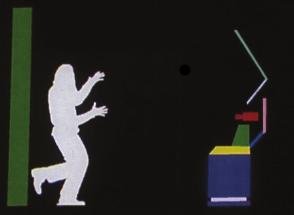
Within the academic debate, the philosophical tradition I am referring to has been known as the ‘philosophy of expression'. Its strength, though, is in its not having been formalised through a specific school of thought, but in its remaining transversal to different times, logics, aesthetics and metaphysics ? from Spinoza, to Nietzsche via the Stoics, Leibniz, Bergson, some Scholastic philosophers and finally arriving at the Deleuzian formulation.
In this respect, ‘expressionism' is an ontological attitude, rather than a system, a philosophy of emergence, affirmation, creation, forces, change. ‘The world', writes Deleuze,‘does not exist outside its expressions'.7 In his radical and original technique of reading philosophical texts against each other, the aforementioned philosophical strands and personalities vibrate and resonate, one by one, and against each other. Questions about abstract materiality, forces in composition and complex agency are interwoven into an ontological and aesthetic discourse of the expressivity of the real ‘otherness'. This sort of Foucauldian ‘space of the outside' has had many names in the history of philosophy, yet in this context we will refer to it simply as the search for the ‘other' perspective, which does not put the human being or its conscious activity at the centre of the construction of reality.
In particular, Deleuze makes of expression the very core of the Spinozist ontology. The idea of expression is nowhere explicit in Spinoza's work, yet it operates silently, between the lines, as the motor of ontological differentiation. Deleuze calls ‘expressionism in philosophy' a triadic problem:
we must distinguish what expresses itself, the expression itself and what is expressed. [...] ‘What is the expressed' has no existence outside its expression, yet bears no resemblance to it, but relates essentially to what expresses itself as distinct from expression itself.8
Substance ? famously depicted by Spinoza as one, infinite and univocal ? expresses itself as causa sui through the attributes. Similarly, the essence of the Substance is characterised as that which is expressed. In other terms, expression is a plane of immanence, the intensive condition for the production of pre-individual subjectivities. Reality is viewed as an expressive means of understanding itself as intensive power that expresses itself through activity. Yet, having no semantic, communicational or even contextual resemblance to expression, the expressed is, qua essence of what expresses itself, distinct from expression itself.
Deleuze both maintains and corrects the Spinozist framework and uses it to develop his own realist and anti-reductionistic ontology. All philosophy of expression is, in this sense, a philosophy of difference. The activity of differentiation is an expressive agency, a movement, a force ? a reality of implications and explications according to which experience is a pre-linguistic and pre-representational activity that can not be separated from the act by which it is expressed. Contra phenomenological understandings of expressive languages as intentionally directing a psychological representation via an abstract content to an ideal or physical referent, Deleuze's expression is neither communication nor socially relativist symbolic exchange. Similarly, it is not a ‘relation' per se: within the horizon of the univocity of Being, the consistency of relational structures is independent from the terms which affect them.
Expression relates as much to actual things, which have an identity, as to virtual ones, pure variations. Such a philosophical struggle against dualism and dialectical reductions considers abstraction a form of reality as much as experience ? neither physical or corporeal but yet real and existing, in evolution with other materialities. It folds and unfolds in response to forces around it. Immanence is, in this sense, as much a principle of thought as of action. This does not mean that we should emphasise sensible experiences ? together with introspection ? as the only possible knowledge. Interpreting reality as an asymmetric, dynamic relation of both abstract and actual intensities means looking at the world according to its virtual tendencies, contra the transcendental illusion that does not respect such processes. Reality thus lies in the disparities between its orders, in the ‘differential'. This virtual composition specifies an account of determination that eludes systems of essentialist classification and does not relegate difference to a negative position in respect to identity.
But how can this philosophy of expression speak to media theory? How can expressionism be used as a conceptual tool to think technology beyond questions of knowledge and representation, and productively engage with symbolic systems, whether as a culturally generated set of events or as a natural experiential field of both agency and thought?
The realist ontological approach to media studies that I am proposing here does not intend to stage a revolutionary act or to imply some sort of Heideggerian concealment operating in the computational world. Rather, it uses different concepts, practices and philosophical positions as ‘windows' into speculative realms of thought and action, clarifying machines of interaction as machines of expression ? which are not necessarily ‘subjective' or ‘constructed', like the paradigms mentioned above. Translated into a media theory context, the representational power of the computer ? procedural, encyclopaedic, participatory and spatial ? is forced to face the question of how it can be unfolded into further layers, vectors, glitches, dynamic forms, tangents and nodal points.
Talking of metaphysics in digital culture is not, by many accounts, a popular move. As a matter of fact, any metaphysical approach is usually regarded as a sort of ‘positivist insult', standing for abstruse speculation and irrational clutter.9 In particular, in computer science ‘ontology' is understood in its most Aristotelian determination, namely the study of how entities can be categorised and associated in hierarchies according to similarities and differences. In this regard, the language of logic conceptualises the domain through methods of classification, unfolding the terminological and conceptual incompatibilities, which inevitably arise within such a formalisation. Consequently, the relationship between the abstract, logical concepts underlying computer operability and their physical realisation is said to be a representational one and computer science per se can be considered as an attempt to empirically explain what symbols are.10
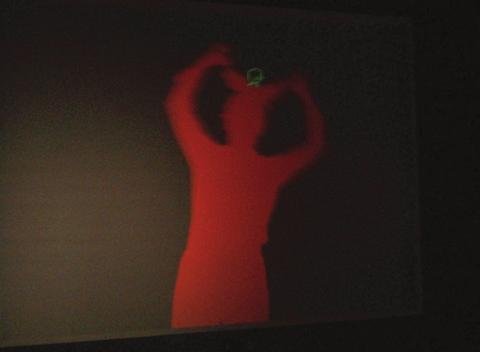
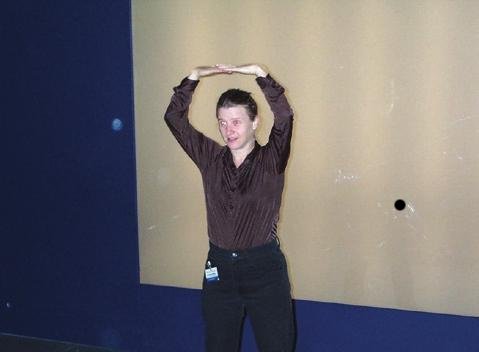
Image: A person interacting with Videoplace at the Prix Ars Electronica exhibition, Austria, 1999
According to the aforementioned Spinozist-Deleuzian articulation of expressionism put forward here, though, levels of logical and physical abstraction are not meant to epistemologically distance coding processes from their mundane manifestation of bits, voltages and wires. Rather, such an expressionist position looks at the emergent properties of computation ? belonging to the interaction between parts ? as accumulations of both hardware and software operations. In this regard, the conceptual and practical possibilities that a theory of expression opens up in relation not only to new media studies but also to the poetics of interactive media and their socio-cultural context are manifold. The adventure of determination is not just a method with which to critique representation. Such a genesis of form does not reduce natural complexity into cultural simplicity but, instead, relates to the immanent capacities of media to give rise to flows of matter-energy in-formation. Interactivity, in this sense, is always a case of encounters: real layers of abstraction, thought, agency, materials and principles that compose the interaction as a differentiated and differential immanent field of being. Informational objects unfold as objects of a problematic, dynamic and differential form ? an intrinsic mode inevitably drawn to ‘interaction' as an affirmation of life in all its complexity.
This realist metaphysics attempts to cut across phenomenological, subjectivist, humanist, transcendent and relativist understandings of interactivity and especially substitute questions of ‘signification' with problems of ‘significance'. Media objects have not been waiting around for their ‘users' in order to exist. Users do not assign signification to things, for these are already in a network of object relations, independent and before cognitive subjects even appear. If we want to use a metaphor, a piece of software code expresses itself like a DNA string would do: it is abstract yet real, having concrete effects and emerging physicality. This does not mean that the world needs to be coded in signifiers to have form. Quite the opposite, in fact: form ? technological, biological, linguistic, cultural, etc. ? does not come from an ‘outside', is not imposed on an inert receptacle in a cosmological and transcendental fashion. The materiality of computation is already ‘morphogenetically' pregnant, capable of generating and expressing form.
Just to provide a small example, let us think about digital image compression, whose aim is to cut on data redundancy so as to transmit and store information efficiently. This compression can be ‘lossy' or ‘lossless'. In particular, lossy compression methods introduce compression artefacts in order to produce a considerable reduction in bit rate. From a technical point of view, such artefacts are a particular class of data error that is usually the consequence of quantisation. Of course, repeatedly compressing and decompressing the image will cause the file to progressively lose quality. Yet we could note that the machine expression takes place exactly in the loss. In other words, how the algorithm selects what to lose is exactly the site of its expressivity. This ‘decision', obviously, is not organised around an epistemic centre of the machine's will. Expression, indeed, is always of a relation: content and meaning (namely, the coding of the compression) are inseparable from agency and execution, yet they do not resemble them. The computational continuity of such expressivity is, once again, a generative problem of interaction, assured through the actualisation of the pragmatic dimension of language.
In this regard, the great challenge for a media theory of expressionism is precisely to engage with representational systems. What is really at stake, in this sense, is the role of computation, coding that exceeds its discreteness and becomes ‘difference'. Again, the question for media theory is to think how the non-representational dimension of technological experience can undertake the symbolic of the machine. How, in this respect, we can account ? with words, logics, codes or anything else ? for a heterogenic expressivity that can travel through all the scales and degrees of such an infinitely transformable and mutable structure we call nature. Of course, technology does not happen in a vacuum. Yet, in order to avoid the phenomenological risk of reinstating a ‘dative' in the generation of the sensible, it is also necessary to posit a nature-culture continuum. Distinctions between what is perceived as ‘natural' and what is instead ‘cultural' are no longer possible, if they ever were. Media are cultural objects that appear as natural problems. They are invented, fabricated, created, yet their happening is not limited to the reality of what is ‘constructed' but extends to what we can intrinsically relate to as the ‘given'. Technology, in other words, is always a vehicle for exploring and expanding culture. Such a cultural dimension, though, lies outside of a particular relativist context and emerges as a natural stratification of practices, thoughts, processes, bodies, mutations and functions. A car being put together on the assembly line, for instance, becomes from this perspective the natural yet techno-cultural expression of the history of its materials, the processuality of human inventions, the routine of working shifts and effectiveness of political decisions, just to name but a few of the conditions of possibility that can not be understood as something innate or predestined for the representational cogito.
To conclude, an expressive metaphysics of media ecologies is not only a battle against the neurosis of teleological subjectivism and the paranoia of technological relativism. It is a proper media ontology having both an intensive ‘inside', which is more broad and profound than cognitive interiority, and an extensive ‘outside', which does not stop at the exteriority of sensible perception. Here is, to close a circle we opened with art history and developed through communication theory, postmodern critique and continental philosophy, ‘the simple expression of complex thought', or a media world that really does not exist outside its expressions.
M. Beatrice Fazi < b.fazi AT me.com > studies humans and machines and finds both of them quite beautiful. She is currently a PhD candidate, in the field of interactive aesthetics and continental philosophy, at the Centre for Cultural Studies, Goldsmiths
Footnotes
1 From Rothko's joint manifesto with Adolph Gottlieb, originally published in The New York Times on 13 June 1943. See James E. B. Breslin, Mark Rothko: A Biography, Chicago: University of Chicago Press, 1993, p.193.
2 Brian Massumi, ‘The Thinking-Feeling of What Happens: A Semblance of a Conversation', in Joke Brouwer and Arjen Mulder (eds.), Interact or Die!, Rotterdam: V2_Publishing/NAi Publishers, 2007, pp.70-91.
3 See also Brian Massumi, ‘Introduction: Like a Thought', in Brian Massumi (ed.), A Shock to Thought: Expression after Deleuze and Guattari, New York: Routledge, 2002, p.xv.
4 Broadly speaking, HCI is defined as the field of computer science that studies the direct link between people and computers.
5 See Myron Krueger, ‘Artificial Reality: Past and Future', in Sandra K. Helsel and Judith Paris Roth (eds.), Virtual Reality: Theory, Practice, and Promise, Westport, CT: Meckler, 1991, pp.19-25.
6 In the late 1980s, computer scientist Mark Weiser envisaged a future of small and distributed computational devices seamlessly integrated with the environment in all the scales of everyday life. See Mark Weiser, ‘Some Computer Science Problems in Ubiquitous Computing', Communications of the ACM, vol.36, no.7, pp.74-83.
7 Gilles Deleuze, The Fold: Leibniz and the Baroque, trans. Tom Conley, Minneapolis, MN: University of Minnesota Press, 1993, p.132.
8 Gilles Deleuze, Expressionism in Philosophy: Spinoza, trans. Martin Joughin. New York: Zone Books, 1992, p.333.
9 Famously, the early 20th century Vienna Circle is said to have rephrased Wittgenstein's stark statement ‘whereof one cannot speak, thereof one must be silent' into the imperative ‘Metaphysicians: shut your traps!'.
10 This is a classic position in AI, stated by Newell and Simon in their work on physical symbol systems. See Allen Newell and Herbert A. Simon, ‘Computer Science as Empirical Enquiry: Symbols and Search', in Margaret A. Boden (ed.), The Philosophy of Artificial Intelligence, Oxford: Oxford University Press, 1990, pp.105-132.
Mute Books Orders
For Mute Books distribution contact Anagram Books
contact@anagrambooks.com
For online purchases visit anagrambooks.com


